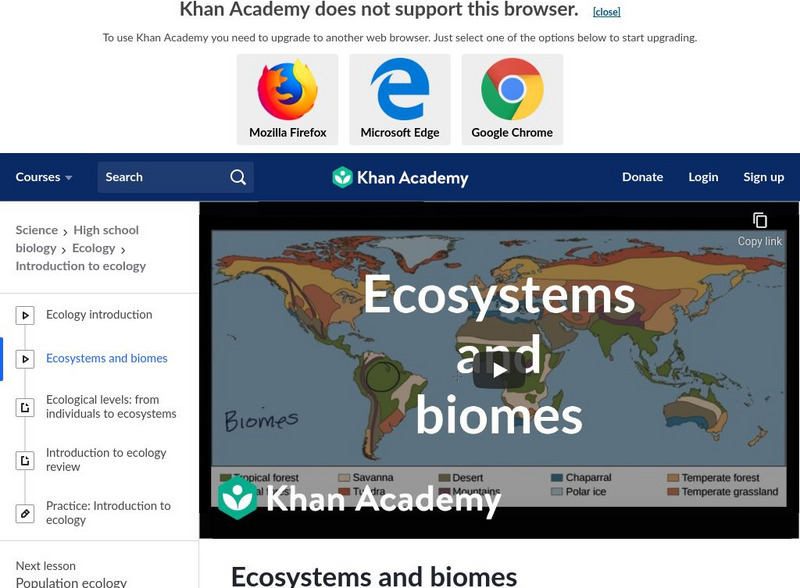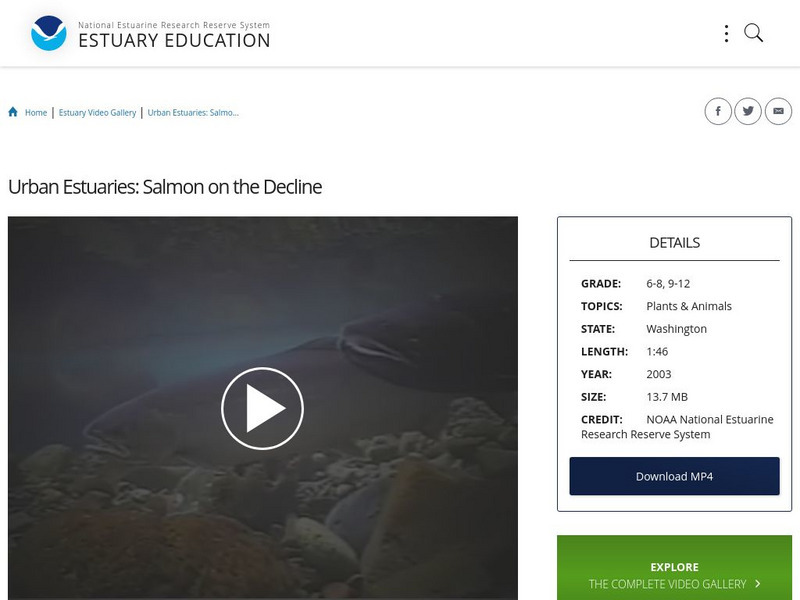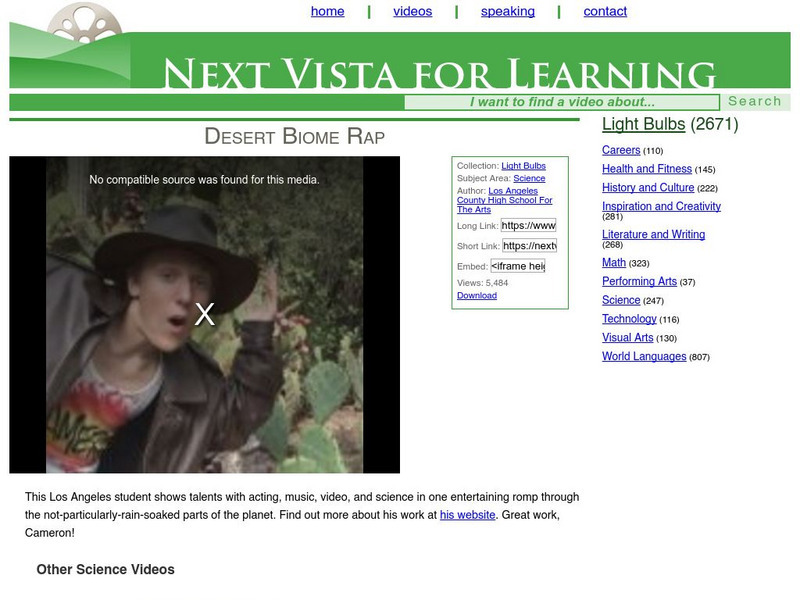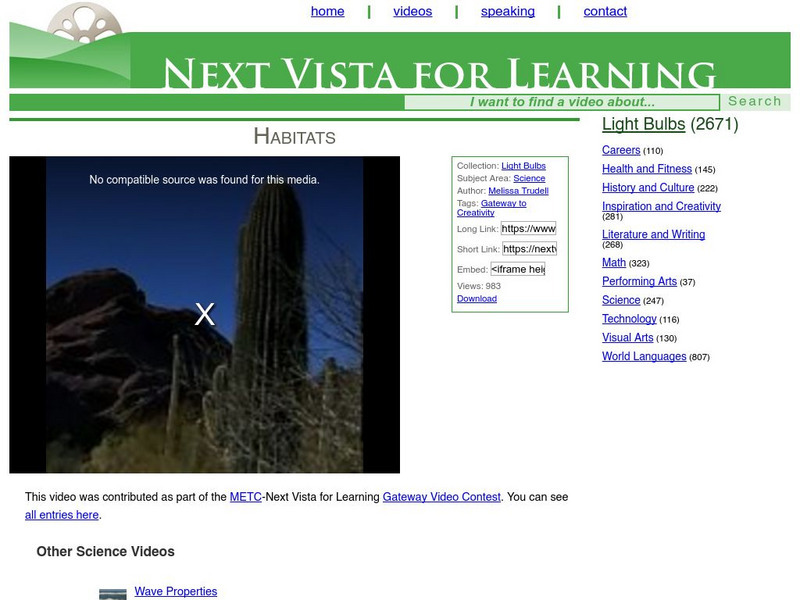Sophia Learning
Sophia: Parts of an Ecosystem
A video lesson defining the basic vocabulary necessary to describe an ecosystem and its parts. Learn how the abiotic and biotic factors work together to form an ecosystem. [7:27]
Make Me Genius
Adaptations in Plants Video Lesson for Kids
Adaptations are special feature in plants and animals which help them to survive in the habitats they live in. In this animation video [7:04], children can learn adaptations in desert and aquatic plants. This video is suitable for grade...
Other
Flocabulary: Adaptation
Students will learn how plants and animals develop cool tricks for surviving amid different climates, predators and more. [2:49]
PBS
Pbs Learning Media: Dinosaur Train: Big Pond Habitat
In this Dinosaur Train clip, Mr. Conductor tells the kids about the Big Pond Carnival This resource teaches students what a habitat is and that a variety of animals can live in a habitat. [1:42]
Khan Academy
Khan Academy: Ecology: Ecosystems and Biomes
An introduction to ecosystems with how land ecosystems are classified into biomes. [7:32]
Khan Academy
Khan Academy: Ecology: Conservation and the Race to Save Biodiversity
Different approaches to conservation and how they can protect species and habitats. [12:04]
Next Vista for Learning
Next Vista for Learning: Keystone Species
A video explaining the definition of a keystone species. It also gives the example of a sea otter as a keystone species and what it does for its habitat. [1:14]
Science Friday Initiative
Science Friday: From Atlantis to Antarctica
In this segment, we'll listen in on a phone call from Atlantis to Antarctica, to check in with researchers studying organisms that live in extreme environments: one group of scientists is working with the submersible Alvin, studying...
NOAA
Noaa: Estuary Education: Urban Estuaries: Salmon on the Decline
A short summary of why Pacific Salmon are declining. Learn about the effects of the four H's on the estuary: habitat, hydropower dams, hatcheries, and harvest. [1:46]
Next Vista for Learning
Next Vista for Learning: Desert Biome Rap
Do you know what biome gets less than 10 inches of rain a year? Also the largest one of these biomes can be found in Antarctica. Did you guess the desert? Learn facts about the desert biome with this video rap. Video also covers plant...
Next Vista for Learning
Next Vista for Learning: Habitats
A video explaining that a habitat must have all of the four basic components to be considered a habitat. It must have food, water, shelter, and space. [1:25]









